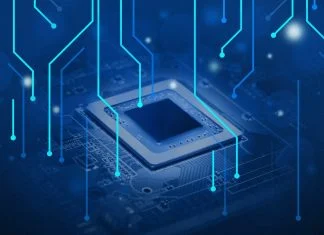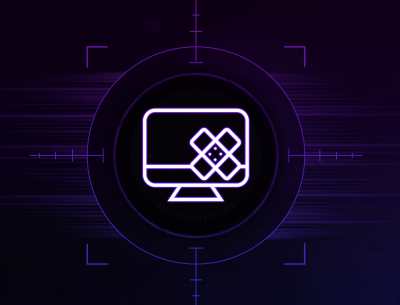A network interface card (NIC), often referred to as a network card, is a vital component of any server infrastructure. It enables systems in a cluster to communicate with each other and the outside world. If your NIC is experiencing issues, it can compromise the health of your cluster, lead to false node failures, or increase the risk of split-brain scenarios. Recognizing the signs of a failing NIC early can save time, reduce downtime, and maintain high availability.
In this blog, we’ll explore how to assess whether your network card needs replacement, the symptoms to look out for, and the tools that can aid you in diagnosing the issue.
Common Symptoms of a Failing NIC
1. Intermittent Connectivity
One of the first signs of NIC failure is unstable or sporadic connectivity. You may notice dropped packets, high latency, or difficulty reaching external hosts. These issues can cause nodes in a LifeKeeper cluster to temporarily lose connection and trigger unnecessary failovers.
2. Degraded Network Speed
If a system is underperforming on network-related tasks such as slow replication, sluggish application response, or delayed heartbeat communication, it may be due to a faulty NIC that is no longer operating at its rated speed (e.g., 1 Gbps vs. 10 Gbps). In clustered environments, slow replication is especially concerning because it delays data synchronization between nodes. This not only increases recovery time in the event of a failover but also raises the risk of data loss or inconsistent state across systems if a complete failure occurs before the replication finishes.
3. System Logs Showing Network Errors
Frequent kernel or system log messages related to the NIC driver or interface, such as “link down,” “NIC reset,” or “device not responding,” are red flags. These messages indicate the OS is having trouble communicating with the card at a hardware or driver level.
4. Unusual Heat or Physical Damage
While not common, physical inspection may reveal damage such as scorch marks or excessive heat emission. Hardware issues at this level can quickly deteriorate performance or cause complete failures, which is certainly not desirable in any environment.
5. Issues in Virtual or Cloud Environments
In virtualized and cloud environments, NIC behavior can be affected not just by the underlying hardware but also by the configuration of the hypervisor or virtual networking layer. For example, virtual NICs assigned through VMware or Hyper-V may show degraded performance if incompatible/outdated drivers are used, or even if the VM is assigned an adapter type that is not optimized for the desired workload.
Network Card Troubleshooting Tools for Windows and Linux
Diagnosing NIC issues early helps minimize downtime and prevent unnecessary failovers. The following are essential tools for identifying hardware or driver-related NIC issues, including options for both Linux and Windows environments:
- ethtool (Linux):
Use this to view NIC statistics, driver information, and up-to-date link status. A high number of transmit/receive errors, dropped packets, or failed auto negotiations could indicate a deteriorating NIC. - PowerShell cmdlets (Windows):
Get-NetAdapter and Get-NetAdapterStatistics allow you to inspect link status, speed, and adapter health on Windows systems. Combined with Get-NetEventSession, you can also track event logs related to NIC behavior over time. - dmesg / journalctl (Linux) or Event Viewer (Windows):
These tools help uncover system or kernel-level alerts. Look for messages such as “NIC reset,” “link down,” or “device not responding.” In Windows, these might appear under “System” or “Application” logs and indicate driver crashes or hardware unresponsiveness. - ping / iperf (Cross platform):
Useful for testing basic connectivity and throughput. If packet loss, jitter, or unexpected latency spikes occur during tests, it could point to faulty hardware or cabling. - Network Bonding Failover Behavior:
When using bonded or teamed interfaces for redundancy, observe whether one interface is triggering failover events more frequently than the others. This could mean the failing NIC is silently degrading, even if no system errors are reported.
When to Replace Your NIC?
It may be time to replace your NIC if:
- You observe consistent or worsening symptoms outlined above.
- Logs and tools confirm hardware or driver issues that persist after driver updates or firmware reinstallation.
- The issue follows the NIC when moved to another system (if removable).
- The card is outdated and unsupported by the current OS or clustering tools.
- You are in a highly available (HA) environment where the continuity of service is critical. In these cases, it is especially best practice to proactively move services or resources to nodes with verified healthy NICs while troubleshooting to avoid risking a failover delay or unexpected downtime.
Preventative Measures to Avoid Network Card Failures
To avoid NIC-related failures:
- Use redundancy: Implement bonding or teaming across multiple NICs.
- Keep firmware up to date: Periodically check for driver and firmware updates from your hardware vendor.
- Monitor proactively: Use tools and third-party network monitoring to catch early signs of NIC degradation.
- Regular testing: Validate link speed and latency as part of regular cluster health checks.
Final Thoughts on Maintaining Network Interface Card Health
The NIC may not be the most glamorous piece of hardware, but its health is critical to a stable, highly available environment. Knowing when and how to assess a network card’s performance helps prevent unexpected downtime, ensures seamless failover behavior, and keeps your cluster communication resilient.
SIOS Technology Corporation provides high availability cluster software that protects & optimizes IT infrastructures with cluster management for your most important applications. Request a demo today.
Author: Aidan Macklen, Customer Experience Engineer Intern at SIOS Technology Corp.



